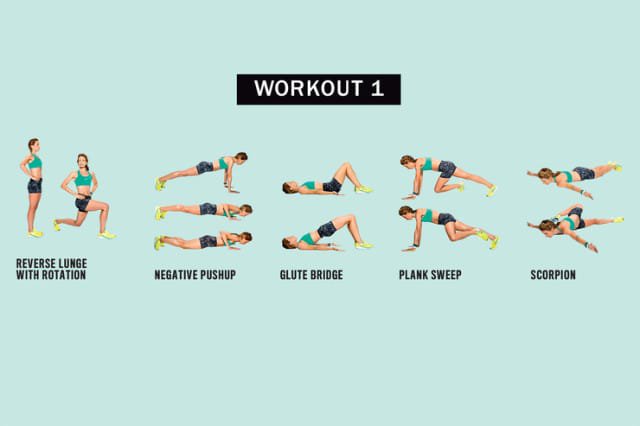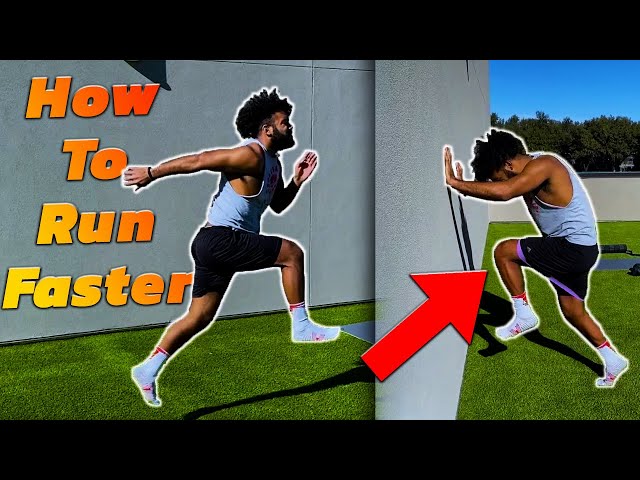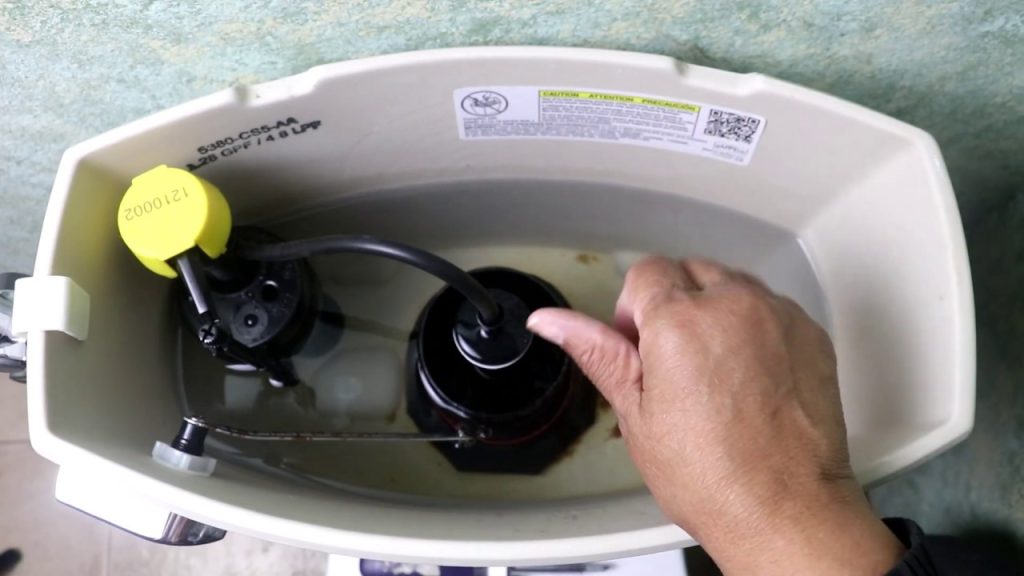Running faster is a common goal for many. It requires dedication and the right strategies.
To achieve better running speeds, you need more than just practice. It involves understanding the right techniques, proper training, and maintaining a healthy diet. Many runners often hit a plateau and struggle to improve their pace. This can be frustrating.
But don’t worry. With the right guidance, you can break through and see progress. This blog will guide you through effective tips and methods. These can help you become a faster, more efficient runner. Whether you are a beginner or an experienced runner, these insights will be valuable. So, lace up your running shoes and get ready to hit new personal bests!

Credit: www.runnersworld.co.za
Warm-up Techniques
Warm-up techniques are essential for improving running speed. They prepare your muscles, reduce injury risk, and enhance performance. A proper warm-up routine includes dynamic stretches and a gradual intensity increase. Let’s dive into these components.
Dynamic Stretches
Dynamic stretches involve active movements that stretch your muscles. These stretches increase blood flow and muscle temperature. Here are some effective dynamic stretches:
- Leg Swings: Swing one leg forward and backward, then switch legs.
- High Knees: Lift your knees high and jog in place.
- Butt Kicks: Kick your heels towards your glutes while jogging.
- Lunges: Step forward into a lunge, then push back and switch legs.
Perform each stretch for about 30 seconds. These movements will help loosen your muscles and joints.
Gradual Intensity Increase
A gradual intensity increase helps your body adapt to running. Start with a slow jog, then progressively increase your pace. Follow these steps:
- Slow Jog: Begin with a gentle jog for 5 minutes.
- Moderate Pace: Increase to a moderate pace for another 5 minutes.
- Strides: Finish with 4-5 strides at your running speed.
This gradual build-up prepares your body for the run ahead. It ensures your muscles are ready for faster speeds.
Incorporating these warm-up techniques into your routine can make a significant difference. They not only help in preventing injuries but also boost your running performance. Remember, consistency is key. Make these warm-up exercises a part of your daily run.
Strength Training
Strength training is crucial for becoming a faster runner. It builds muscle and improves endurance. By strengthening specific muscle groups, you can boost your running performance. This includes focusing on core and leg muscles. Let’s dive into some effective exercises.
Core Exercises
A strong core provides stability and balance. This helps you maintain good running form. Planks are a great exercise. Hold a plank position for 30 seconds. Gradually increase the time as you get stronger. Another effective exercise is the Russian twist. Sit on the floor, lean back slightly, and twist your torso from side to side. This targets your oblique muscles.
Leg Workouts
Powerful legs are vital for speed. Squats are essential for leg strength. Stand with your feet shoulder-width apart. Lower your body as if sitting in a chair. Keep your back straight. Return to the starting position and repeat. Lunges are also beneficial. Step forward with one leg, lowering your hips until both knees are bent at 90-degree angles. Push back to the starting position and switch legs.
Calf raises strengthen your calves. Stand on the edge of a step. Raise your heels until you are on your tiptoes. Lower and repeat. This improves your running efficiency.
Proper Nutrition
Proper nutrition plays a crucial role in improving your running speed. Fueling your body with the right nutrients ensures better performance, quicker recovery, and sustained energy levels. This section will cover two key aspects of proper nutrition for runners: maintaining a balanced diet and ensuring proper hydration.
Balanced Diet
A balanced diet is essential for any runner. It provides the necessary energy and nutrients to support your training. Include a variety of foods in your meals to get a range of nutrients.
Here are some key components of a balanced diet:
- Carbohydrates: The primary source of energy. Opt for whole grains, fruits, and vegetables.
- Proteins: Crucial for muscle repair and growth. Include lean meats, beans, and legumes.
- Fats: Essential for long-term energy. Choose healthy fats like avocados, nuts, and olive oil.
- Vitamins and Minerals: Important for overall health. Eat a variety of colorful fruits and vegetables.
Below is a sample meal plan:
| Meal | Examples |
|---|---|
| Breakfast | Oatmeal with berries and nuts |
| Lunch | Grilled chicken salad with mixed greens |
| Dinner | Baked salmon with quinoa and steamed vegetables |
| Snacks | Fruit, yogurt, or a handful of nuts |
Hydration
Hydration is just as important as eating well. Proper hydration helps maintain energy levels and prevent cramps. Drink water throughout the day, not just during your runs.
Here are some tips for staying hydrated:
- Drink Water Regularly: Aim for at least 8-10 cups daily.
- Electrolytes: Use sports drinks during long runs to replenish lost electrolytes.
- Monitor Urine Color: Pale yellow indicates good hydration. Darker urine suggests you need more water.
Remember, every runner’s needs are different. Listen to your body and adjust your intake accordingly.
Interval Training
Interval training is a powerful way to boost your running speed. This method alternates between intense bursts of activity and periods of rest. It helps build endurance and strength while burning more calories. Below, we explore the key components of interval training.
Sprint Intervals
Sprint intervals involve short bursts of fast running. Typically, these sprints last between 20 to 60 seconds. The goal is to push your body to its maximum effort. This trains your muscles and cardiovascular system to handle higher intensity. Over time, you will notice improved speed and stamina.
To start, choose a distance or time for your sprint. Warm up with a light jog for about 10 minutes. Then, sprint as fast as you can for your chosen interval. Focus on maintaining good form. Keep your shoulders relaxed and pump your arms. After the sprint, you will move to the recovery period.
Recovery Periods
Recovery periods are essential for interval training. These breaks allow your body to recover. They usually last between 1 to 4 minutes, depending on your fitness level. During this time, you can walk or jog slowly. The goal is to bring your heart rate down while staying active.
Effective recovery periods help you perform better in the next sprint. They prevent fatigue and reduce the risk of injury. Gradually, you will find that your recovery times shorten as your fitness improves. This is a sign that your body is adapting and getting stronger.
Incorporate interval training into your routine twice a week. Consistency is key. Over time, you will see significant improvements in your running speed and overall fitness.
Form And Technique
Improving your form and technique can greatly enhance your running speed. Proper form reduces the risk of injury and helps you run more efficiently. Let’s break it down into key areas: posture and stride efficiency.
Posture
Good posture is crucial for faster running. Keep your head up and look ahead. Your shoulders should be relaxed, not hunched. Align your torso with your hips. This alignment helps you breathe better and maintain balance.
Engage your core muscles. This provides stability and reduces the strain on your lower back. Your arms should be bent at a 90-degree angle. Swing them naturally as you run. Avoid crossing them over your body. This can waste energy and slow you down.
Stride Efficiency
Stride efficiency is key to running faster. Aim for a quick and light stride. Avoid overstriding, which can lead to injuries. Your foot should land directly under your body. This reduces impact and improves efficiency.
Focus on a midfoot strike. This is where the middle of your foot touches the ground first. It helps distribute impact evenly. Keep your strides short and quick. This reduces contact time with the ground. It also conserves energy and boosts speed.
Work on your cadence. Aim for 180 steps per minute. This can help you maintain a faster pace without extra effort. Practice drills to improve your stride. High knees and butt kicks can be very effective.
Consistency
Consistency is key to getting faster at running. It helps build stamina and strength. Regular training helps your body adapt and improve. Staying consistent with your running routine will lead to better results over time.
Regular Schedule
Set a regular running schedule and stick to it. Run at the same time each day. This helps make running a habit. Start with short, manageable distances. Gradually increase your mileage over weeks. This prevents injuries and keeps you motivated.
Progress Tracking
Track your progress to stay motivated and see improvements. Use a running app or a journal. Record your distance, time, and how you felt. This helps you see patterns and adjust your training. Celebrate small wins to keep your spirits high. Tracking your progress shows how far you have come and where you need to go.
Rest And Recovery
Rest and recovery are essential for any runner aiming to improve speed. Without adequate rest, your body cannot repair and strengthen itself. This often leads to burnout and injuries. Let’s dive into the critical aspects of rest and recovery that can help you get faster at running.
Sleep Importance
Sleep is the cornerstone of recovery. During sleep, your body repairs tissues, builds muscle, and replenishes energy stores. Aim for 7-9 hours of quality sleep each night. Poor sleep can lead to decreased performance and slower recovery times.
To improve your sleep quality:
- Keep a consistent sleep schedule
- Create a relaxing bedtime routine
- Limit screen time before bed
- Ensure your sleep environment is dark and quiet
Active Recovery
Active recovery involves low-intensity exercises that help your body recover faster. These activities increase blood flow to muscles, aiding in nutrient delivery and waste removal.
Types of active recovery include:
- Walking
- Light jogging
- Swimming
- Yoga
Incorporate active recovery into your weekly routine. For example, you can alternate between running days and active recovery days.
| Day | Activity |
|---|---|
| Monday | Running |
| Tuesday | Active Recovery |
| Wednesday | Running |
| Thursday | Active Recovery |
| Friday | Running |
| Saturday | Rest |
| Sunday | Long Run |
Remember, the key to getting faster is not just about running more but also about resting and recovering effectively.

Credit: www.youtube.com
Mental Strategies
Running faster is not just about physical strength. Your mental state plays a key role too. Mental strategies can help you overcome barriers and push your limits.
Goal Setting
Setting clear goals is crucial for any runner. Goals give you direction and motivation. Start by identifying your long-term running objectives. Break these down into smaller, achievable targets. For example, aim to run 5 kilometers without stopping. Once you achieve this, set a new goal, like improving your time by a minute.
Use the SMART criteria to set your goals:
| Criteria | Description |
|---|---|
| Specific | Clearly define what you want to achieve |
| Measurable | Track your progress with numbers |
| Achievable | Set realistic goals |
| Relevant | Ensure your goals align with your broader objectives |
| Time-bound | Set a deadline to reach your goals |
Visualization
Visualization is a powerful mental strategy. It involves picturing yourself successfully completing your runs. Close your eyes and imagine the race. Feel your feet hitting the ground. Hear your breaths. See the finish line. This technique helps build confidence and prepares your mind for the actual run.
Follow these steps for effective visualization:
- Find a quiet place where you won’t be disturbed.
- Close your eyes and take deep breaths to relax.
- Imagine every detail of your run, from start to finish.
- Focus on the positive outcomes and your strong performance.
Practicing visualization regularly can significantly enhance your running performance. It trains your mind to stay calm and focused under pressure.

Credit: ketone.com
Frequently Asked Questions
How Can I Run Faster?
To run faster, focus on interval training. Incorporate sprints into your routine. Improve your running form and strength. Consistent practice is key.
What Exercises Help Increase Running Speed?
Strength training, plyometrics, and hill sprints improve running speed. Incorporate squats, lunges, and calf raises into your workouts.
How Often Should I Run To Improve Speed?
Run at least three times a week. Include speed workouts, tempo runs, and long-distance runs in your routine.
Does Running Form Affect Speed?
Yes, running form greatly affects speed. Maintain an upright posture, high knees, and quick foot turnover for optimal performance.
Conclusion
Improving your running speed takes dedication and effort. Stay consistent with your training. Focus on proper form and technique. Include strength exercises in your routine. Don’t forget to rest and recover. Eat a balanced diet to fuel your runs. Set achievable goals and track progress.
Celebrate small victories. With time and persistence, you will get faster. Enjoy the journey and keep pushing forward. Happy running!



